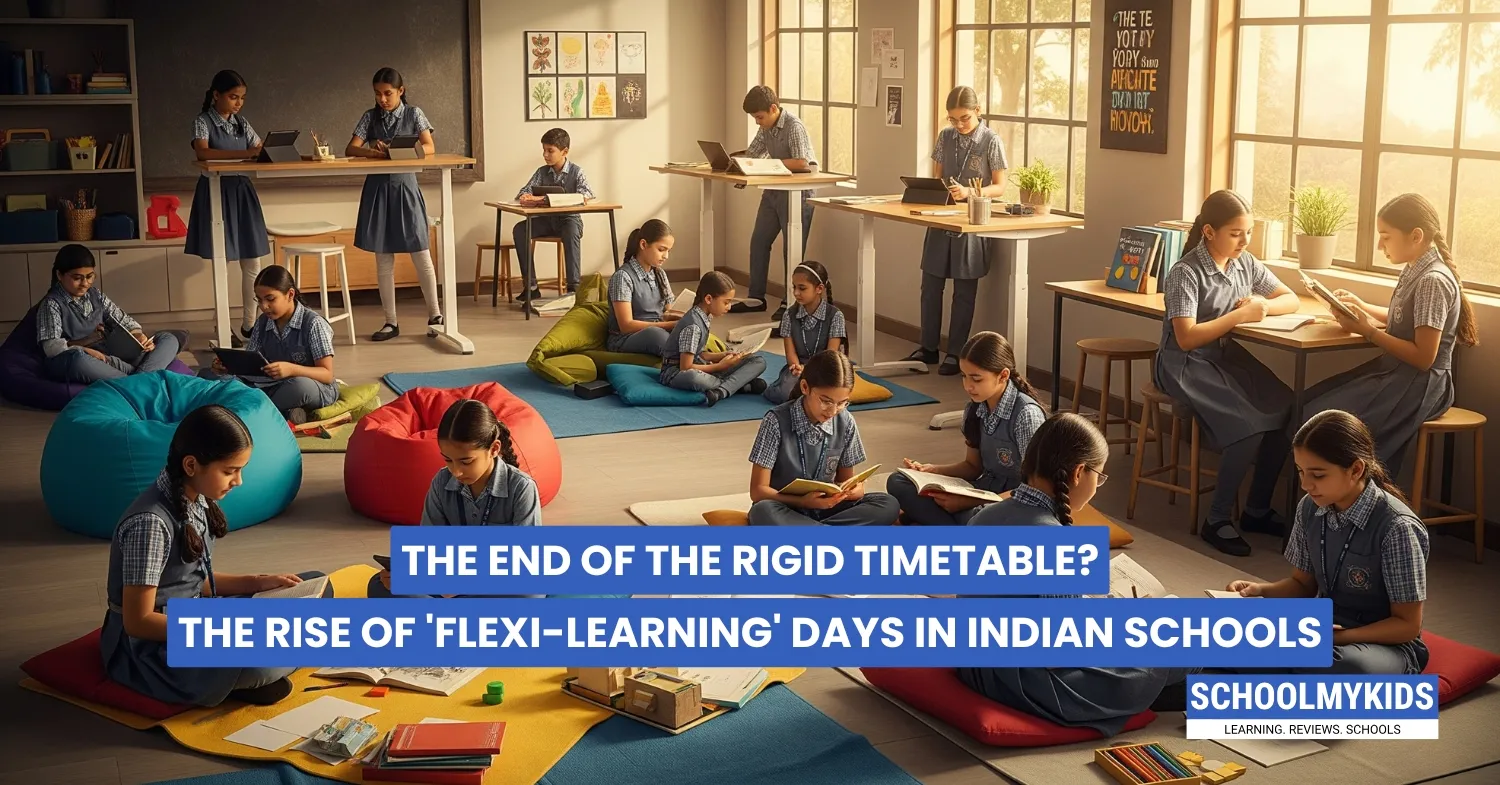Remember those days when your child's school routine was set in stone? 7:30 AM assembly, six periods, lunch break, two more periods, and home by 3 PM. Every single day, the same drill. Well, things are changing in Indian schools, and as a parent, you need to know about it.
What Exactly is Flexi-Learning?
Think of flexi-learning as education getting a modern makeover. Instead of your child sitting in the same classroom for 6-7 hours straight, they now split their learning between school and home. Some days they attend regular classes, other days they learn from home using digital tools and personalized study plans.
It's like having the best of both worlds: the structure and social interaction of school, plus the comfort and individual attention of home learning. Your child might attend school for three days and learn from home for two days, or follow a completely different schedule based on their needs.
Why is This Happening Now in India?
The pandemic pushed us all into digital learning, ready or not. But what started as an emergency solution showed us something important: kids can learn effectively outside traditional classrooms, too.
Indian education has always been about cramming 40-50 students into one classroom. Teachers struggle to give individual attention, and many bright kids get lost in the crowd. Meanwhile, others find the pace too slow or too fast. Flexi-learning addresses these age-old problems.
The National Education Policy 2020 also emphasized flexible learning approaches. Schools across India (from Delhi to Bangalore to Mumbai) are slowly adopting this model. Private schools are leading the way, but even some government schools are experimenting with hybrid approaches.
How Does It Actually Work?
Imagine your 8th grader loves science but struggles with Hindi. In a traditional setup, she sits through the same Hindi class as everyone else, often feeling frustrated.
With flexi-learning, she might attend school Monday, Wednesday, and Friday for interactive subjects like science experiments, group discussions, and sports. Tuesday and Thursday, she learns from home using apps, online videos, and gets extra Hindi support from a tutor or even you.
The school provides learning materials, assignments are submitted online, and teachers stay connected through video calls and messaging apps. It's not about reducing learning – it's about making it more effective.
The Good Side of Flexi-Learning
- Individual Attention: Your child isn't just another face in a crowd of 40. At home, they can spend extra time on difficult topics and speed through easier ones.
- Less Travel Stress: Especially in cities like Delhi and Mumbai, commuting to school can be exhausting. Flexi-learning cuts this down significantly.
- Family Time: More opportunities to bond with your child and be involved in their education directly.
- Real-World Learning: Home learning days can include practical activities – cooking involves math, gardening teaches science, and family discussions develop communication skills.
- Technology Skills: Your child naturally becomes more tech-savvy, a crucial skill for their future.
- Reduced Peer Pressure: Some children learn better when they're not constantly comparing themselves to classmates.
The Challenges You Should Know About
- Your Involvement: Unlike traditional schooling, where you could rely entirely on teachers, flexi-learning requires your active participation. If you're working parents with tight schedules, this can be tough.
- Internet and Device Requirements: Not all families have reliable internet or multiple devices. This can create inequality among students.
- Social Interaction: Your child might miss out on daily playground conversations, group projects, and the natural socializing that happens in school corridors.
- Discipline at Home: Maintaining school-like focus at home isn't easy. Distractions are everywhere, from siblings to TV to the comfort of their bed.
- Teacher Training: Not all teachers in India are comfortable with digital tools yet. This inconsistency can affect your child's learning experience.
- Assessment Concerns: How do you fairly test a child who learned math through an app versus one who learned in a traditional classroom?
Traditional vs. Flexi-Learning: The Real Comparison
Traditional schooling gives your child a structured environment, a fixed routine, and guaranteed social interaction. It's predictable and has worked for generations. Teachers are physically present to clarify doubts immediately, and there's a clear separation between school and home life.
Flexi-learning offers personalization and flexibility but demands more from parents. Your child develops self-discipline and tech skills, but might miss out on some social experiences.
The truth? Neither is perfect. The best approach depends on your child's personality, your family's circumstances, and your child's learning style.
Is Your Child Ready for Flexi-Learning?
Ask yourself: Does your child need constant supervision to study, or are they self-motivated? Are they comfortable with technology? Do they have a quiet space at home to focus? Are you available to support their learning?
If your child is easily distracted, struggles with self-discipline, or heavily relies on social interaction for motivation, traditional schooling might still be better. But if they're independent learners who get bored in regular classes or have specific interests they want to pursue, flexi-learning could be amazing.
The Indian Context Matters
Remember, we're not copying Western models blindly. Indian families are traditionally involved in their children's education anyway. Most parents already help with homework, hire tutors, and monitor academic progress closely. Flexi-learning just formalizes this involvement.
Also, with entrance exams like JEE and NEET being so competitive, many students already supplement school learning with coaching classes and self-study. Flexi-learning can integrate all these efforts more efficiently.
What This Means for Your Child's Future
The job market your child will enter values flexibility, digital literacy, and self-directed learning. Whether they become engineers, doctors, entrepreneurs, or artists, they'll need to adapt quickly and learn continuously.
Flexi-learning prepares them for this reality. They learn to manage their time, use technology effectively, and take responsibility for their education, all important life skills.
Conclusion
Flexi-learning isn't about replacing traditional education entirely. It's about giving you and your child more options. Some families will love the flexibility and personalization. Others will prefer the structure and social aspects of traditional schooling.
The key is understanding that education is evolving, and being rigid about "the way things have always been done" might not serve your child's best interests.
Talk to your child, assess your family's situation, and if their school offers flexi-learning options, consider it seriously. Don't dismiss it as a fad, but don't jump in without understanding the commitment required.
Remember, the goal isn't to make education easier; it's to make it more effective for your child's unique needs and future success.
The world is changing rapidly, and our children's education should prepare them for the future they'll actually live in, not the past we grew up in.









Be the first one to comment on this story.